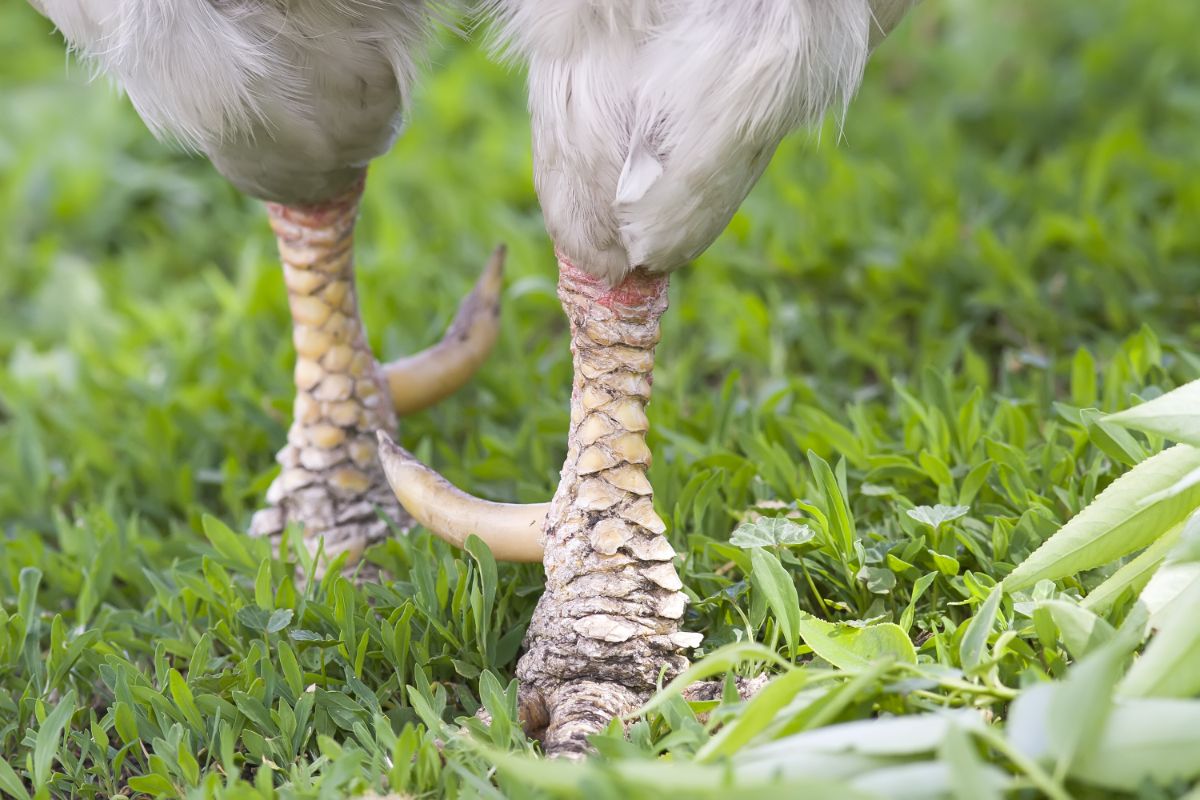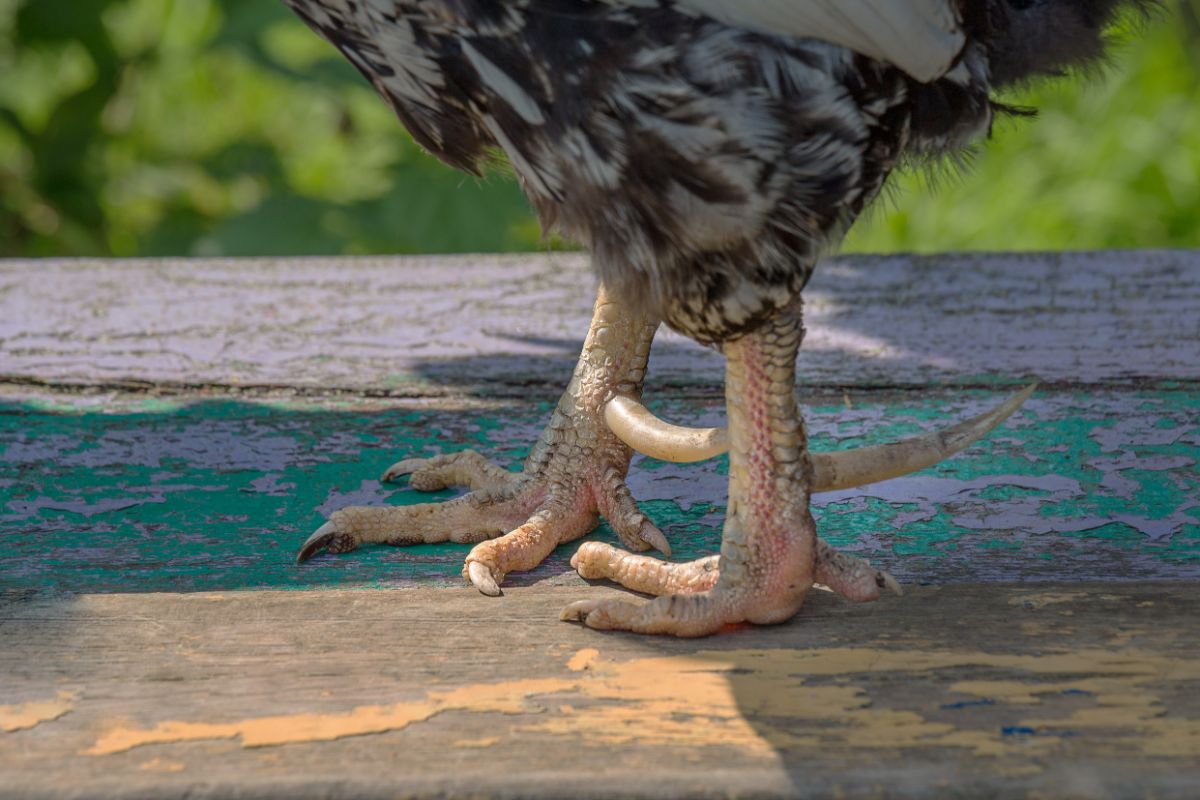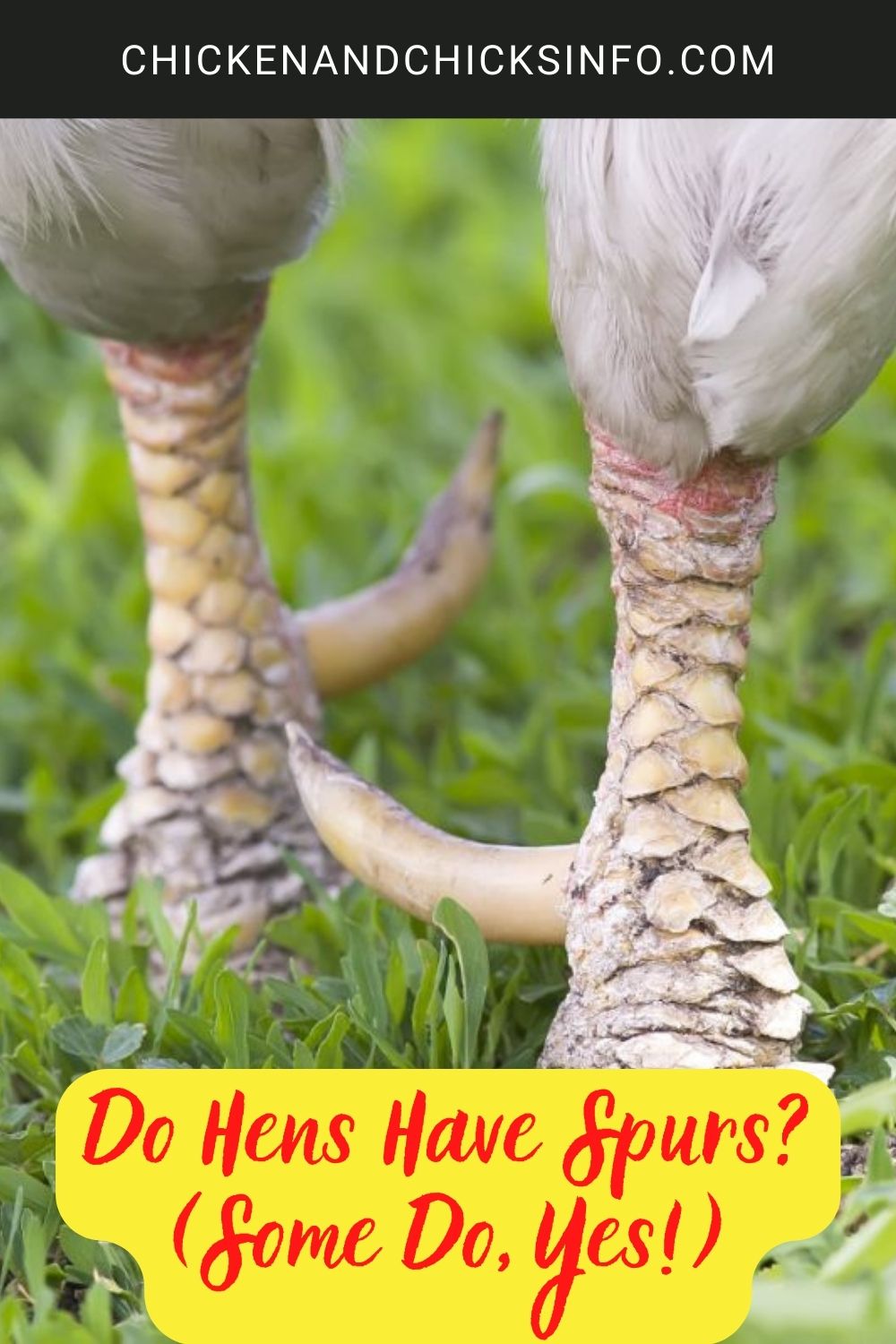
We all know that roosters have spurs. But have you ever stopped and thought, do hens have spurs too?
It’s not such a crazy question.
Because some hens do grow spurs too!
Not all hens. And it’s mostly certain breeds, like Mediterranean breeds and Polish hens in particular. But some hens do grow spurs.
Jump to:
At What Age Do Chickens Get Spurs?
The answer to this can vary greatly. As a general answer, chickens can have fully grown spurs anywhere between the ages of 3-9 months.
Typically, it’s mostly roosters that grow spurs. Both roosters and hens will develop spur bumps within weeks, for most hens it stops there.
Some hens will grow spurs however as I’ll explain in more detail in this article.
Do All Roosters Have Spurs?

Nope, not all roosters have spurs.
This only confuses matters more, as seeing spurs growing is one of the best ways to tell a male from a female chick when they’re young.
For this reason, I never rely on one feature as a way to tell the gender of a chick. You’re better off waiting until they are growing their wattle, comb, and their feathers are developing.
Or, until you hear that early morning crow of course.
Although did you know that some hens can crow too?!
It’s getting really confusing now, right? Both hens and roosters can grow spurs, crow… don’t worry they do always look very different when they’re fully grown!
Should I Trim My Chicken's Spurs?
If your hen or your rooster for that matter spur’s are growing so long that they’re affecting their ability to walk, causing injuries to other chickens in your flock, or presenting any other issues, they can be trimmed.
I’ve heard about a few methods people use to do this in their backyard, and some are a little dated in my opinion.
One technique will come as a bit of a surprise if you’ve never heard of it is called the “potato method”. Basically, this involves heating up a potato and pushing it over the spur, then as you twist and remove it the sheath is removed.
This actually used to be fairly popular. Probably due to being inexpensive and something anyone could do at home.
It can be painful for the chicken though and can lead to infection as it exposes some sensitive areas on their leg.
A better way to trim spurs is to use a power tool like a Dremel. It’s quicker, less painful, and the heat from the tool clots the blood so it’s often a clean procedure.
This video explains how to quickly, and safely trim a spur with a Dremel. In fact, it runs through how to cut them right back, which is a better way to describe it.
Are Hens and Rooster's Spurs the Same?

Yes, they are. If you were hoping to still be able to tell the difference between a male and female by their spurs, it’s not going to be reliable.
You’re better off waiting a few months to spot the other physical features that are a more reliable way to tell the difference, such as:
Saddle feathers - Those thick feathers growing down the back towards the tail are called saddle feathers, and only roosters have these.
Hackle feathers - Roosters also have hackle feathers, which is a thicker plumage around the neck.
Larger combs and wattles - Roosters also (usually) have larger combs and wattles. It’s not a sure bet, as most of the physical characteristics I’ve covered, but it’s often enough to tell.
In my experience, a hen’s spur and a rooster’s look the same. Hens tend to be less aggressive and less likely to use them as aggressively, however.
Related - How long do roosters live? I answer that question and more.
In Summary - Do Hens Have Spurs?
There you have it, it’s a lesser-known fact but hens can have spurs - yes.
Not all hens, and it’s typically limited to certain breeds. So, don’t be surprised if you thought you had a rooster on your hands, only to find out “he’s” a “she”.
It’s might just be eggs you’re greeted with each morning, not an early morning “cock-a-doodle-do” wake up call!





